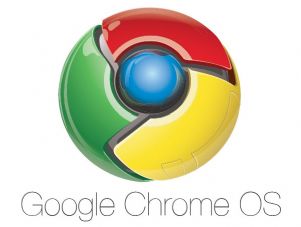Google has announced it is integrating its Chrome OS Enterprise device management suite with four leading mobility management vendors to offer unified end-point management (UEM) capabilities.
Last year, Google introduced its Chrome Enterprise suite and offered integration with VMware Workspace ONE’s UEM cloud portal, allowing IT shops to manage Chrome OS devices using both native Chrome Enterprise and VMware tools from a single console.
Google charges $50 (€41) per device annually for the Chrome Enterprise management service.
Partnership
The company has now partnered with Cisco Meraki, IBM MaaS360, Citrix XenMobile and Zoho to further integrate management tools for Chrome OS with the popular EMM vendors.
Cisco Meraki offers security features and endpoint management through a web-based dashboard interface. IBM MaaS360 with Watson offers the management of smartphones, tablets, laptops and IoT devices from a single console. Citrix XenMobile provides mobile device and application management, while Zoho offers a CRM solution that includes mobile and other endpoint management capabilities.
“With these partnerships in place, enterprises can pick the solution that fits their business best,” Google said.
Google also announced greater capabilities for IT to manage of its Chrome browser. Last December, it unveiled the first of several security enhancements for enterprises. It is now adding enforced existing user sign-on into Chrome.
Google eventually plans to add enterprise reporting capabilities to the browser to give IT admins access to local machine logs so they can better understand each device under their control.
Continuing strategy
The announcement is part of the company’s continuing strategy to give IT administrators a single pane through which they can manage Chrome OS devices.
The expansion of EMM support is good for enterprises interested in the platform but unsure how to secure, manage and enforce polices on Chrome devices, said Phil Hochmuth, IDC’s programme director for Enterprise Mobility.
While Chrome OS has a lot of security benefits, in that it is a lightweight OS, there have been questions about how to separate personal and work applications and profiles on the devices, Hochmuth said.
“I think just as significant for enterprises – beyond EMM support – is the inclusion of Active Directory support for the devices, allowing for management… outside of the Google identity system,” Hochmuth said via email.
In general, unified endpoint management (UEM) allows IT managers to remotely provision, control and secure everything from cell phones to tablets, laptops, desktops and now, Internet of Things (IoT) devices.
Vendor integration
Among other things, Google’s integration with EMM vendors will let IT managers perform a number of tasks such as locking or disabling Chrome OS devices, whitelisting users to sign onto corporate networks via the devices, and manage other user settings.
According to Forrester Research, about 4% of workers globally were using a Chromebook at work in 2017.
“What this announcement does show is tremendous interest in Chromebooks in the enterprise,” said Forrester analyst Andrew Hewitt.
As Google tries to push into the enterprise space, one of the features nearly all companies require is device manageability, such as initial setup, security, app management and policy management, according to Jack Gold, principal analyst with J Gold Associates.
While Google has its own management tools for Chrome, few companies want to deploy stand-alone device management when they’ve already turned to enterprise mobility management (EMM) and UEM solutions from the likes of AirWatch, IBM, Citrix and others for Windows, Android or iOS, Gold said.
“By allowing Chrome powered devices to be managed by these tools, Google is decreasing the level of resistance from IT to bringing in a new OS, as it fits directly into the existing infrastructure tools IT is already using and familiar with,” Gold said via email. “So, it’s very important that Google makes this capability a part of an enterprise Chrome play.”
Other strategies
Microsoft, however, already has a major installed base of UEM capabilities, often due to “give-it-away strategies when enterprises buy other products,” Gold said, noting that Chrome is not integrated with the Microsoft UEM. As a result, Google still has a significant UEM barrier in enterprise.
Windows 10 comes with EMM tools, allowing enterprises to deploy and configure PCs and other Windows devices using “modern management” approaches that include mobile device management (MDM) API hooks and controls.
Many of the basic application and system provisioning functions required for business laptops and PCs running Windows 10 can now be done through the OS’s EMM control consoles
“And not all of the management capabilities inherent in Chrome enterprise devices are available in the Chrome API used by the UEM vendors, so there is still some disparity with management capability between third-party and Google management products,” Gold said.
UEM
A good UEM strategy can consolidate IT roles and policies so that there’s one management strategy for all electronic devices. But the UEM marketplace is still relatively nascent.
UEM vendors include Microsoft, VMWare (AirWatch), MobileIron, Citrix, JAMF and Blackberry. Additionally, JAMF offers a UEM platform for Mac and iOS devices.
“Many businesses will likely ramp up pilots and departmental rollouts of [UEM] technology in 2018, as VMware, MobileIron…and especially Microsoft now have mature products and roadmaps for migrating users from traditional PC management to ‘modern’ management,” Hochmuth said. “I think Chrome getting deeper into enterprise with EMM and [active directory] support will push more enterprises to start thinking about UEM as well.”
Organisations attempting to roll out a UEM strategy should consider small pilots first, according Hochmuth.
For example, if a company is rolling out Windows 10 to some groups, it’s good to think about a unified management strategy to test the waters and see if it works.
In the coming weeks, Google said there will be additional details that offer “deeper looks” into what its new enhancements can mean for businesses.
IDG News Services







Subscribers 0
Fans 0
Followers 0
Followers